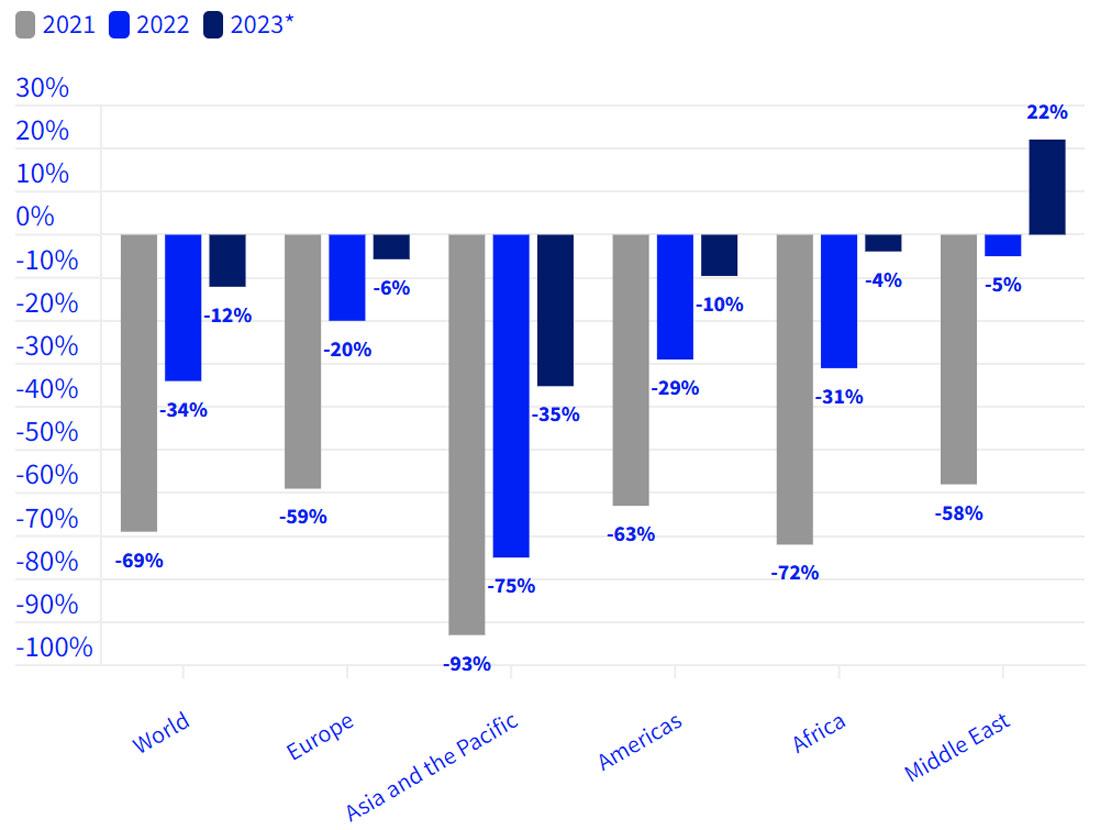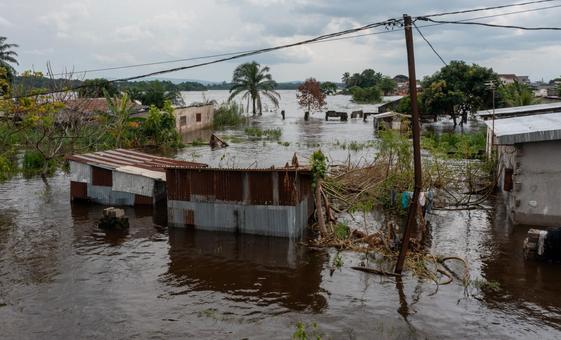Some 1.8 million people have been impacted by torrential downpours that have dumped double the usual amount of rainfall on the Congo, impacting nine out of the country’s 12 departments.
In the three weeks since the government in Brazzaville declared an emergency, the floods have destroyed or damaged 34 health facilities, 120 schools, and over 64,000 houses.
Many villages can only be reached by boat or canoe, said OCHA spokesperson Jens Laerke, who appealed for $26 million for basic support including shelter, food, health, water, sanitation and hygiene.
$3.6 million from the UN’s Central Emergency Response Fund has been allocated to the emergency already.
But much more is needed for the people of the Congo due to the destruction of arable land, fruit trees, fishing gear and livestock, Mr. Laerke said.
World tourism on course for full recovery by year’s end
International tourism bounced back during 2023 and is expected to make a “full recovery” to pre-COVID level by the end of this year, the UN World Tourism Organization (UNWTO) said in its first snapshot of the year on Friday.
Travel was up to 88 per cent of pre-pandemic levels by the end of December, with an estimated 1.3 billion international arrivals.
The unleashing of remaining pent-up demand, increased air connectivity, and a stronger recovery of Asian markets and destinations are expected to bring the tourism market back to 2019 levels this year.

International Tourist Arrivals (% change over 2019)..
Middle East, Europe and Africa
The latest UNWTO World Tourism Barometer provides a comprehensive overview of 2023:
- The Middle East led recovery in relative terms as the only region to overcome pre-pandemic levels with arrivals 22 per cent above 2019.
- Europe, the world’s most visited region, reached 94 per cent of 2019 levels, supported by intra-regional demand and travel from the United States.
- Africa recovered 96 per cent of pre-pandemic visitors and the Americas reached 90 per cent.
- Asia and the Pacific reached 65 per cent of pre-pandemic levels. However, performance is mixed, with South Asia already recovering 87 per cent of 2019 levels and northeast Asia around 55 per cent.
Four sub-regions exceeded their 2019 arrival levels: the southern Mediterranean Europe, Caribbean, Central America and North Africa.
UNWTO Secretary-General Zurab Pololikashvili said the data “underscores tourism’s resilience and rapid recovery…The rebound is already having a significant impact on economies, jobs, growth and opportunities for communities everywhere. These numbers also recall the critical task of progressing sustainability and inclusion in tourism development.”
$1.4 trillion boost
The latest UNWTO data also highlights the economic impact of recovery with international receipts reaching $1.4 trillion, compared with $1.5 trillion in 2019.
Several destinations reported strong growth in international tourism receipts during the first 10 to 12 months of 2023, exceeding in some cases growth in arrivals.

Archaeological sites dot the island of Meroe in Sudan.
Sudan war: UNESCO raises alarm over ancient pyramids of Meroe
The UN education, science and culture agency UNESCO on Friday raised the alarm over reports that Sudan’s warring militaries are fighting in the vicinity of the ancient Nubian pyramids of Meroe – a protected World Heritage Site.
In a press release issued on Friday, UNESCO expressed deep concern over the safety of the site raising fears that some of the priceless artifacts from the Kingdom of Kush dating back to the eighth century B.C. could be looted and trafficked.
“This World Heritage site, inscribed in 2011, consists of the royal city of the Kushite kings at Meroe, near the River Nile, the nearby religious site of Naqa and the temple complex Musawwarat es Sufra”, UNESCO said.
The agency said that following reports indicating clashes between Government troops and their rival SDF militia near the site, some 250 km north of the capital Khartoum, all parties must fully respect international law.
The 1954 Convention for the Protection of Cultural Property in the Event of Armed Conflict stipulates that cultural property must neither be targeted nor used for military purposes.
Following closely
UNESCO said officials were “following the evolving situation very closely”, especially given the high risk of looting and illicit trafficking due to reduced security around the royal necropolis and other sites.
The agency called for vigilance on the part of law enforcement, “art market actors and all cultural professionals to refrain from acquiring or taking part in the import, export or transfer of ownership of cultural property when they have reasonable cause to believe that the objects have been stolen, illegally alienated, clandestinely excavated or illegally exported from Sudan.”
Since April last year, when the brutal civil war erupted around Khartoum, UNESCO has mobilized to support the culture, education, science and information sectors in Sudan.
In addition to invoking international law, the agency has implemented a series of emergency measures in the country and beyond. More information here.

